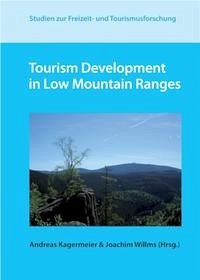Low mountain regions have been developed into tourist destinations from the beginning of commercial tourism in the 19th century. The early industrialisation of the lowlands in the river valleys and basins and the attendant rise of an industrialised urbanitiy made the nearby nature-oriented low mountains perfect destinations for recreational tourism in spas and mountain resorts. Apart from its nature low mountain regions often have cultural heritage as a potential attractor for tourism. But since the end of the 20th century tourism, leisure and recreation are on the move. Especially tourism, leisure and recreation in low mountain ranges faces various challenges due to important and sustainable changes forced by glocalised impacts like climate change, economic transformations, environmental degradation, aging societies, shifting values, new competitive markets and new ICT. The contributions in this book seek to examine the complexity of tourism, leisure, and recreation within the geographic frame of low mountains and their corresponding valleys and its changing interdependencies of nature, endogenous and exogenous culture.

